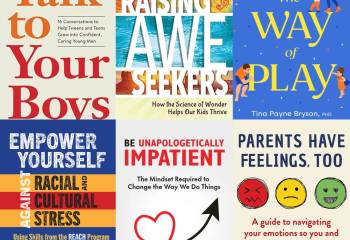Awe is the feeling we get in the presence of something vast that challenges our understanding of the world, like looking up at millions of stars in the night sky or marveling at the birth of a child. When people feel awe, they may use other words to describe the experience, such as wonder, amazement, surprise, or transcendence.
The most common sources of awe are other people and nature, but awe can be elicited by many other experiences as well, such as music, art or architecture, religious experiences, the supernatural, or even one’s own accomplishments.
We often think about awe in response to rare and intense events, such as viewing a sunrise over the Grand Canyon or watching Olympians break world records. But awe is also found in the everyday—watching the leaves of a gingko tree change from green to yellow, or seeing a stranger give food to a homeless person.
Scientists believe that awe may have helped our evolutionary ancestors survive in the face of uncertain environments that demanded group cooperation. Today, researchers are uncovering the benefits of awe for clear thinking, good health, and close relationships.
Although the modern view of awe in Western society is overwhelmingly positive, awe is a complex emotion, one that can be intensely pleasurable or imbued with dread, depending on the context. Awe can be felt in response to nature’s capacity for destruction (e.g., thunderstorms), a leader’s coercive charisma (e.g., Adolf Hitler), or our perception of an angry and punitive God. More awful experiences of awe are tinged with fear and threat and may not have the same benefits as awesome experiences of wonder or amazement.
For more: Read Dacher Keltner’s essay on “Why We Feel Awe,” or watch his video on “Why Awe Is Such an Important Emotion.”
For an in-depth overview of where awe comes from, what its benefits are, and how to cultivate it, read this special white paper on the science of awe.








